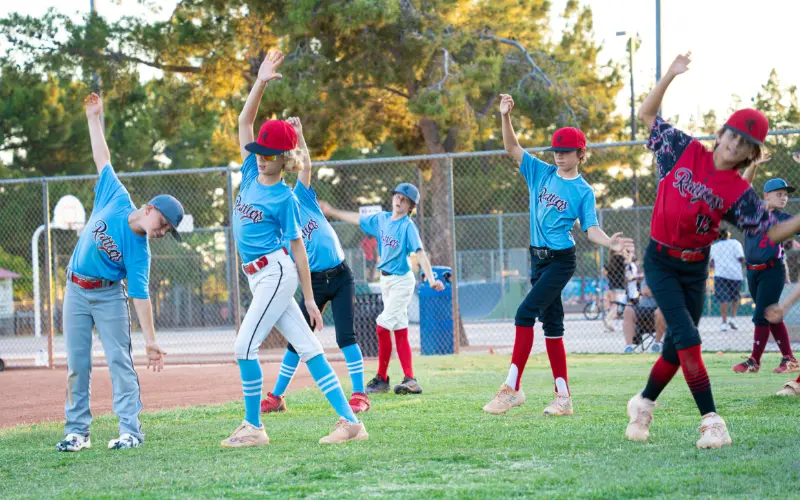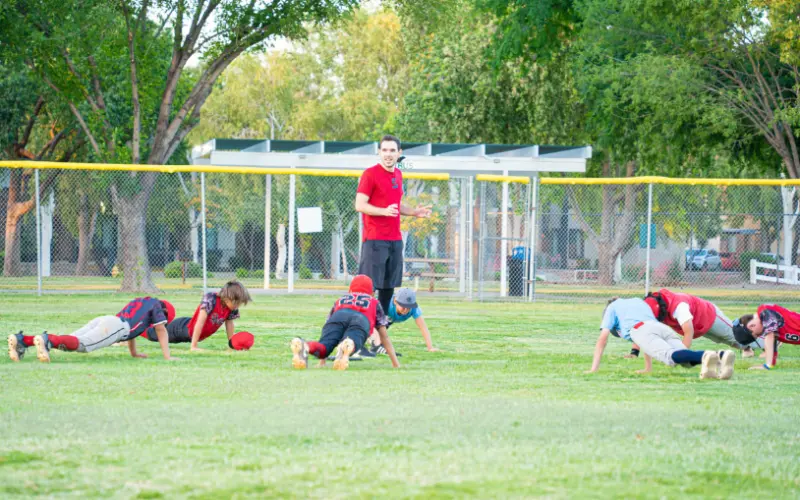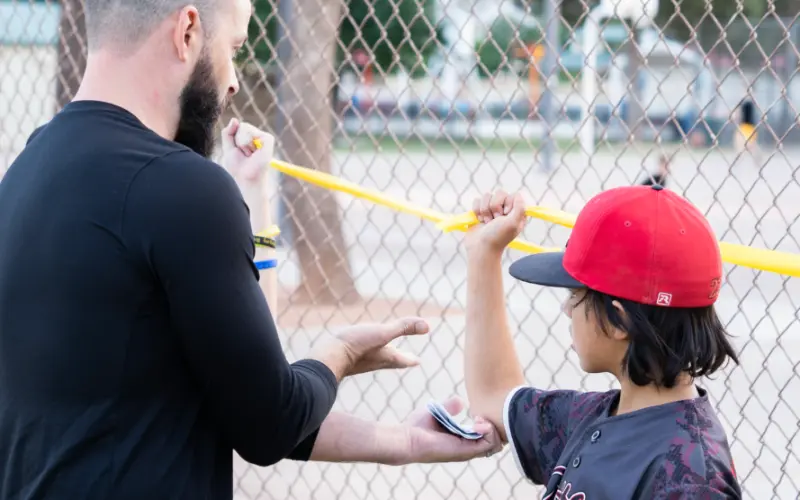By: Brian Bettner, PT, DPT, and Tanner Chitwood, PT, DPT
Between the time restrictions and demands of practices and competitions, finding a couple of minutes to fit in a true total body pre sport warm-up can seem impossible. Today’s athletes are taking on an incredible amount of load through their bodies- head to toe- and we want to make our athletes ready to compete at the highest level while accounting for this load.
The world of youth baseball and softball has significantly changed over the past decade. Especially in warm weather states, there has been a significant increase in the number of games, practices and overall demand on a throwing arm. As youth athletes progress in baseball and softball, there are also increased opportunities for players to be a part of several teams and leagues during a single season. Where this idea of increased participation may improve experience and skill set, this increase in load through throwing arm means decreased rest time and off-season healing.
With the changes and growth in the sports’ intensity, competition, and frequency we unfortunately have not seen any change in how our overhead athletes prepare themselves. Youth athletes from t-ball to college need to be ready for their sport. Especially with baseball and softball, tradition is everything and the traditional warm up of a couple arm circles or jogging for a few minutes does not adequately prepare their entire body for the load it takes on during play. This is where the Spooner Sports Medicine Team can step in and help!
Overuse Injuries and Movement Dysfunctions
Baseball and softball players have started to specialize in one position skill set at a younger age. Because these athletes are playing one position year-round, we have seen an increase in overuse injuries involving the throwing elbows and shoulders.
Based on how these injuries are presenting we have noticed that these injuries aren’t new- they started weeks or months before they prevented the athlete’s ability to play. When aches and pains start to arise, athletes are very skilled in the art of compensation. Overhead athletes are able to find a way to perform at high levels and compensate through other motions, but this does not mean that they are moving efficiently. If we can identify and treat lower extremity dysfunctions and improve mobility and strength, the athlete’s shoulder and elbow won’t take on as much of the force- especially if they aren’t warmed up correctly.
The Need for a Full Body Warm-Up
Warm-ups progress the athlete’s body to the forces that they will take on the field. Without taking the time to get the body checked in and moving functionally for the sport, compensations and overuse injuries can occur. Taking the 5-15 minutes to prepare your athletes for sport is vital to help them perform their best and mitigate injury risk.
Especially in sports where athletes specialize in one movement pattern performed by one side of the body, there is a growing need to warm up the entire body to activate all upper and lower body muscles for sport.
4 Ways to Warm-Up the Overhead Athlete
Below are examples of total body dynamic movements that can be utilized by all ages and skill level of overhead athletes. Our vision is to use lower load and higher repetition to prepare muscles for activity as well as to create muscle memory and pattern recognitions where these fully focused warm-ups become second nature to our youth athletes.
Lower body
3D Maps (Mobility & Stability focused): 5 repetitions on each leg in each plane

Trunk
Plank Positions Single Arm Temp Reaches: 5 repetitions each side

Upper body
Banded Shoulder Exercises: High repetitions with low resistance and load to mimic sport demands

Agility
Anterior lean into momentum sprints: 3x for 10 yards
For more information and ideas on how to implement a full body warm-up or utilize athlete screens to identify common movement dysfunctions, please reach out to Tanner Chitwood PT, DPT and Brian Bettner PT, DPT at Spooner Mesa Gateway.

